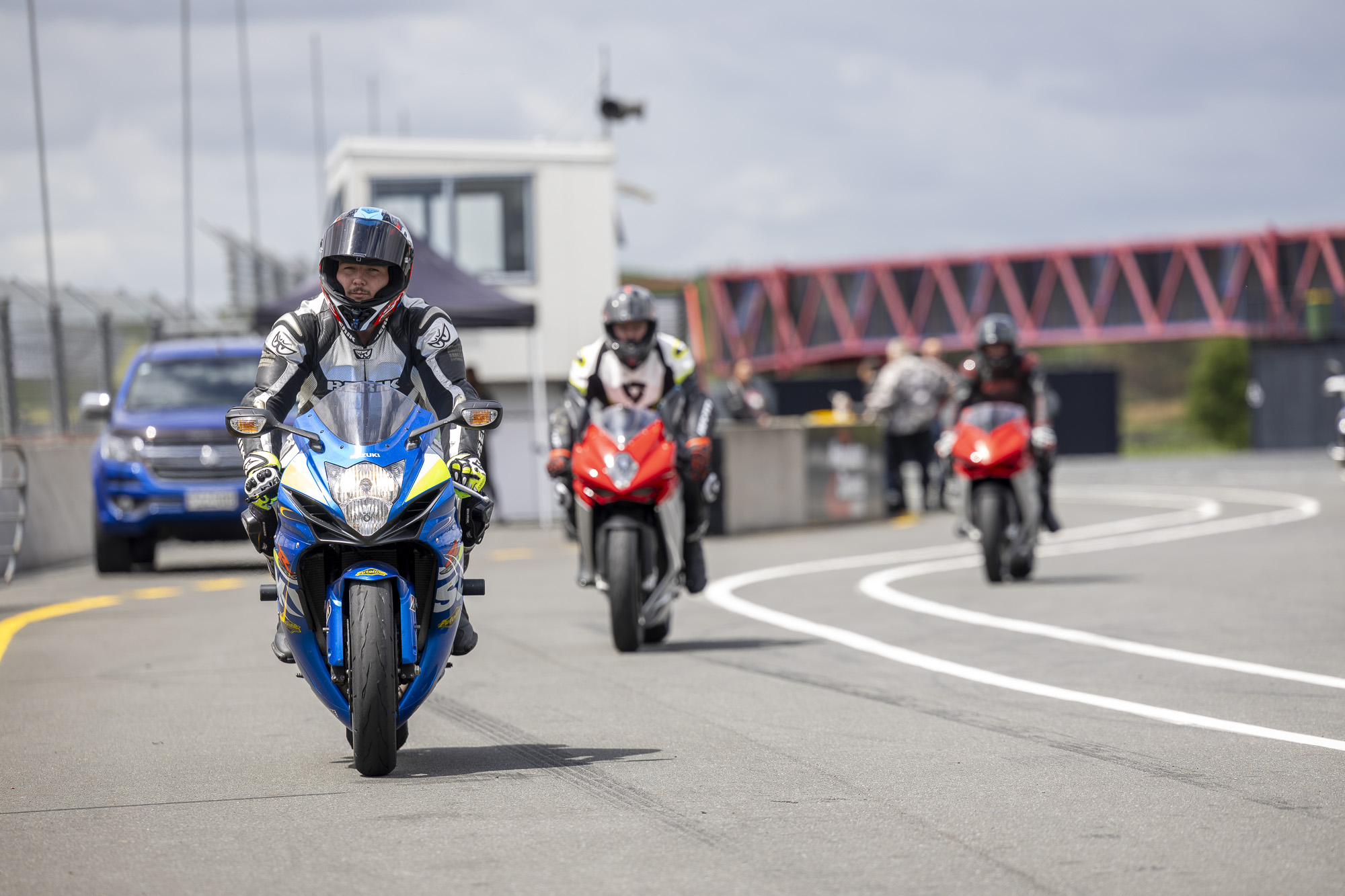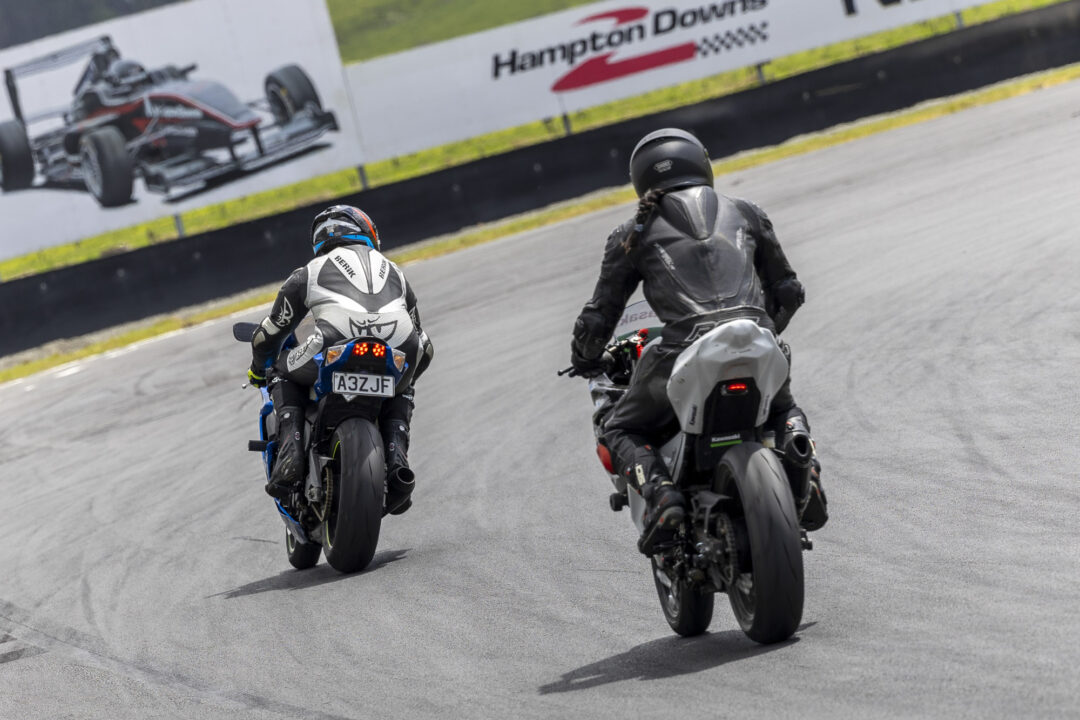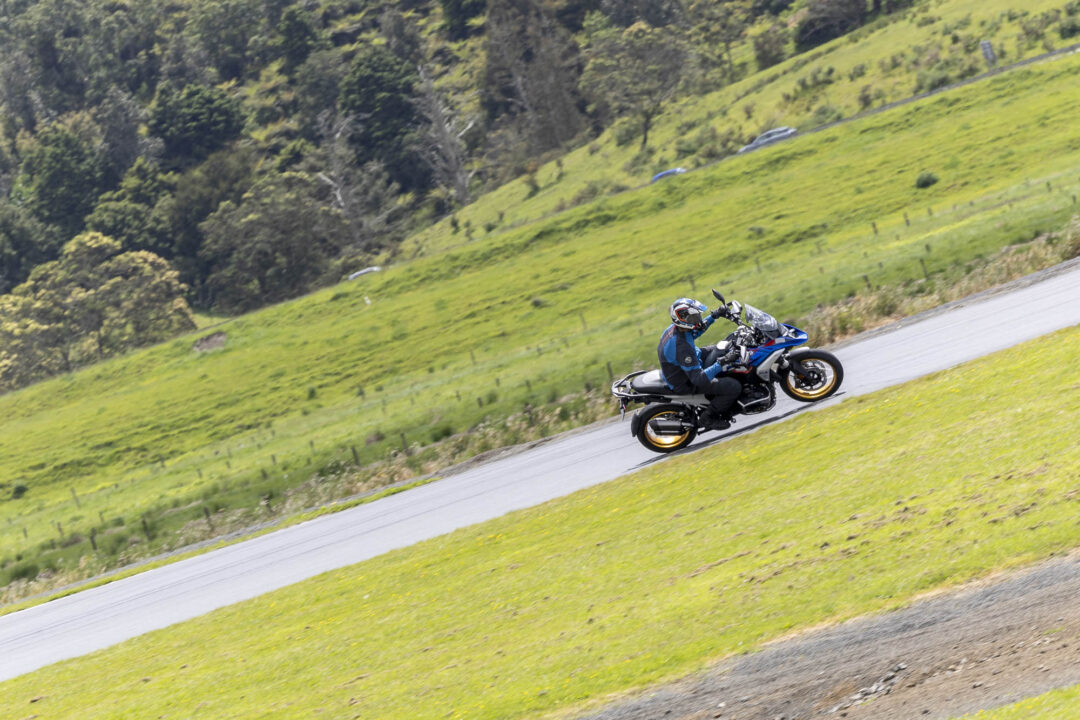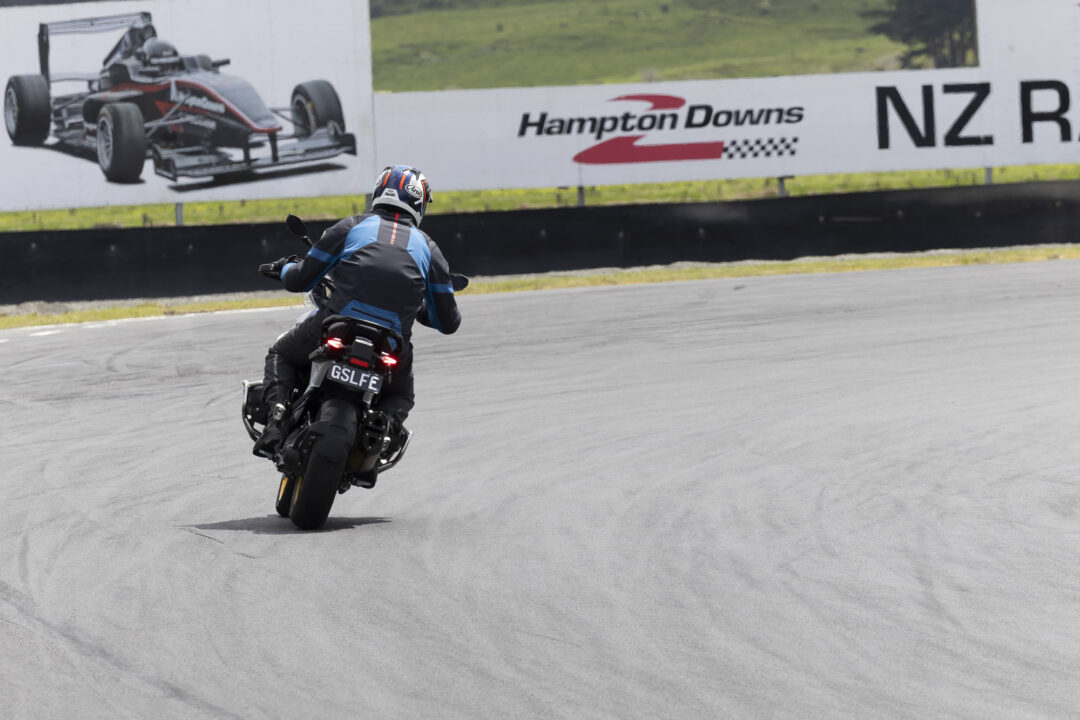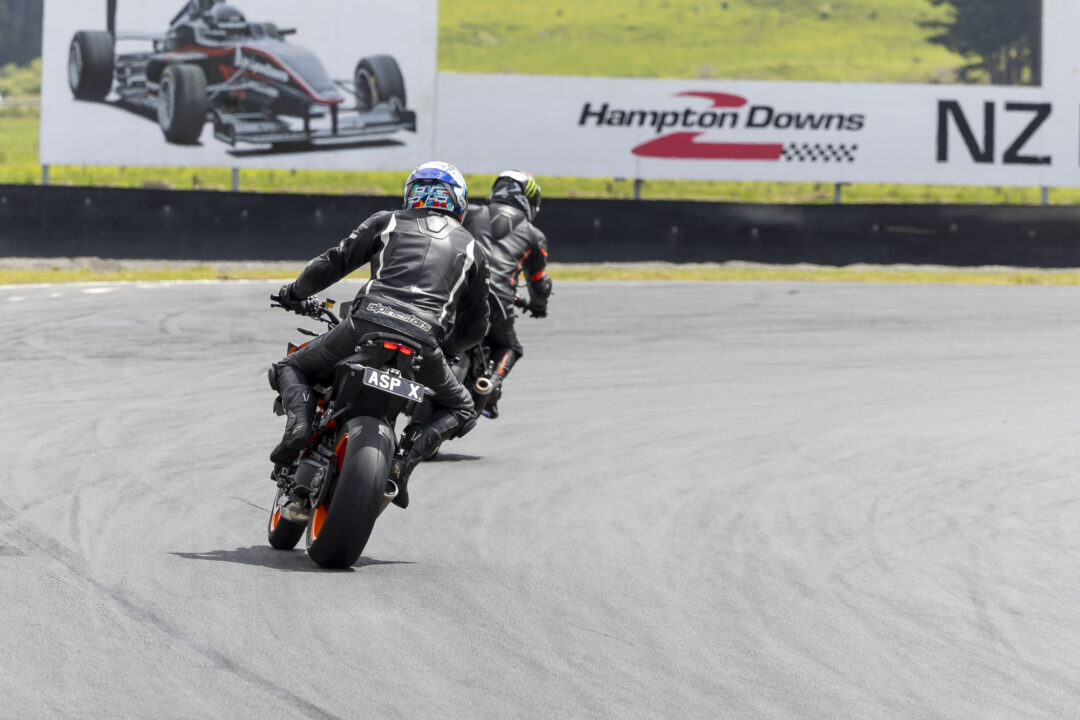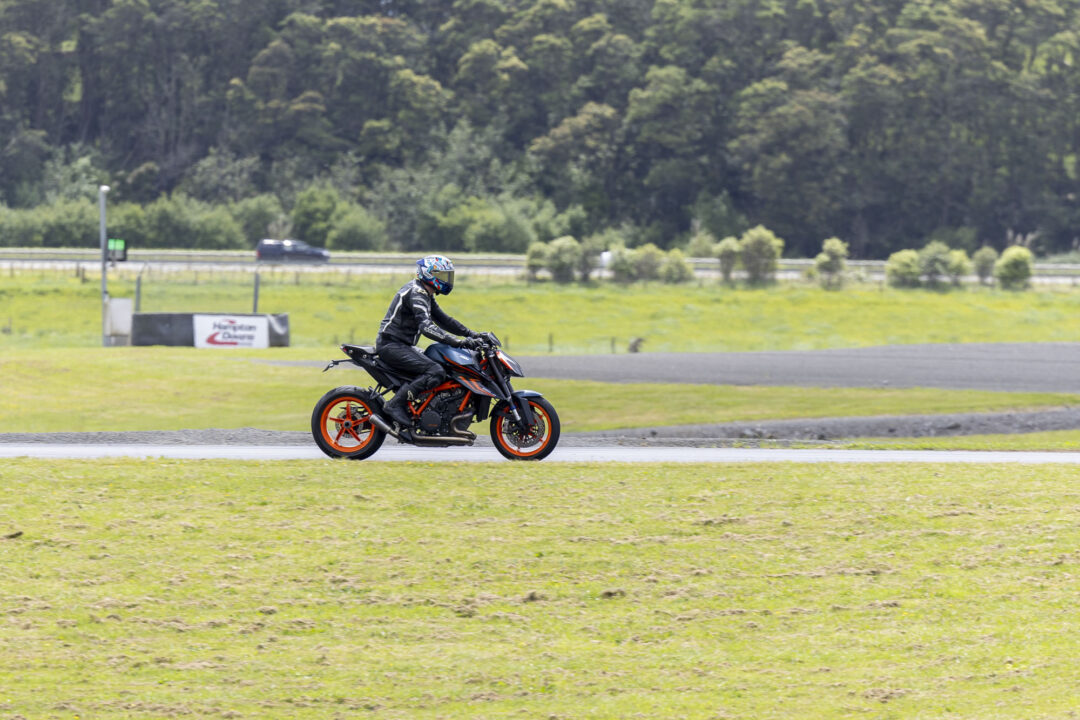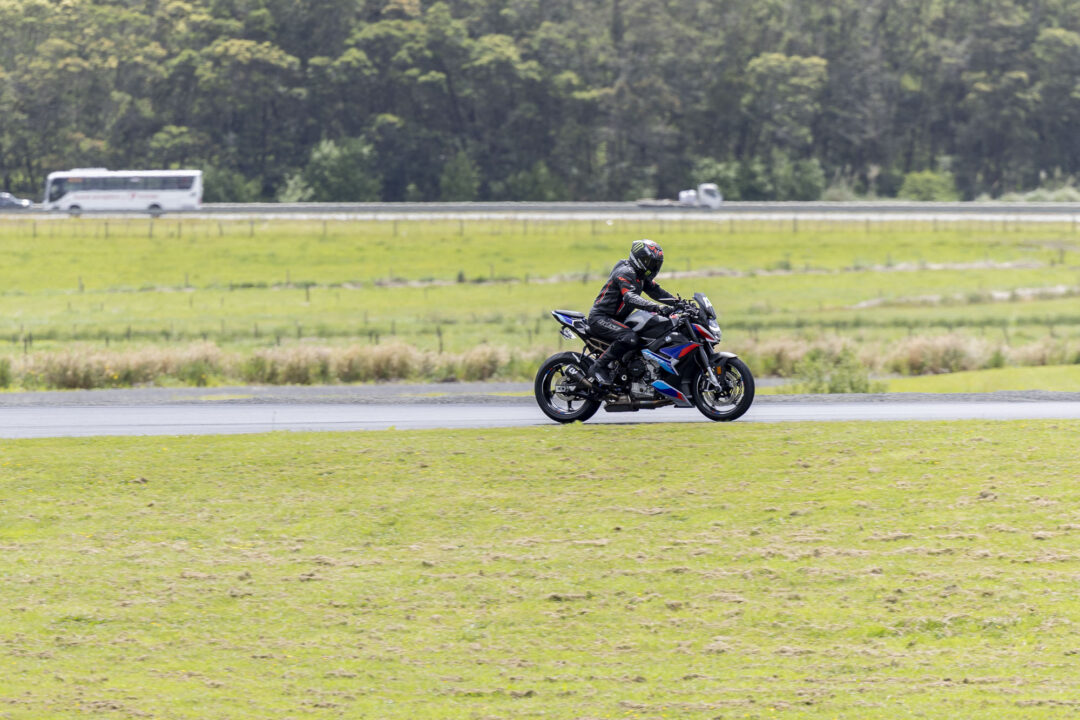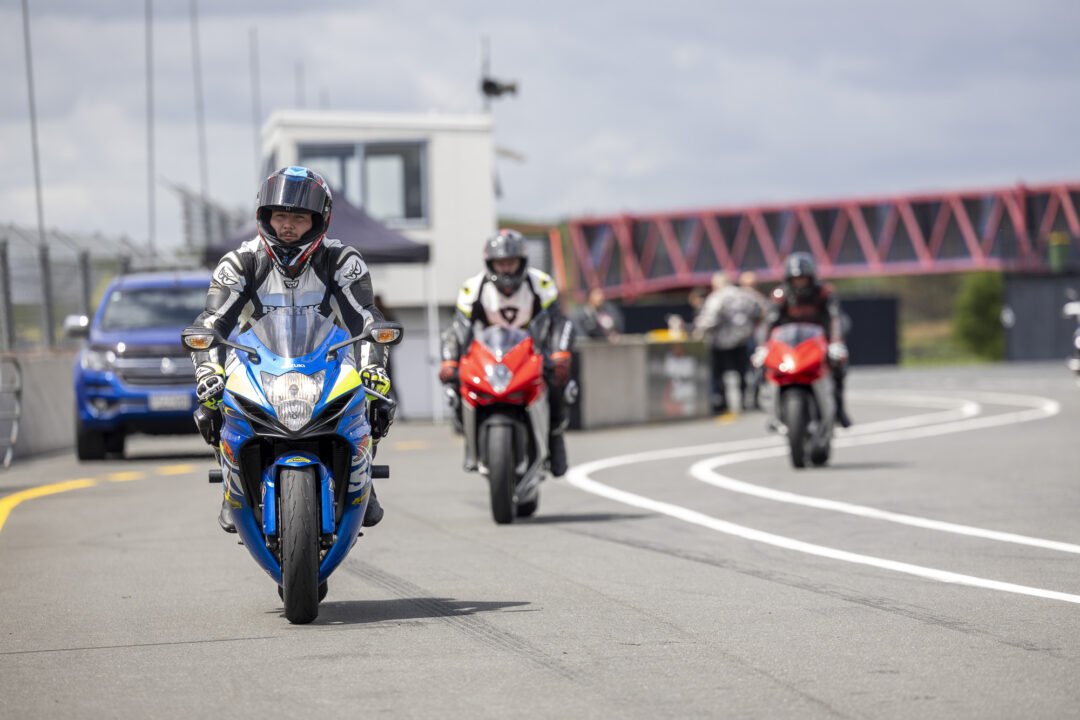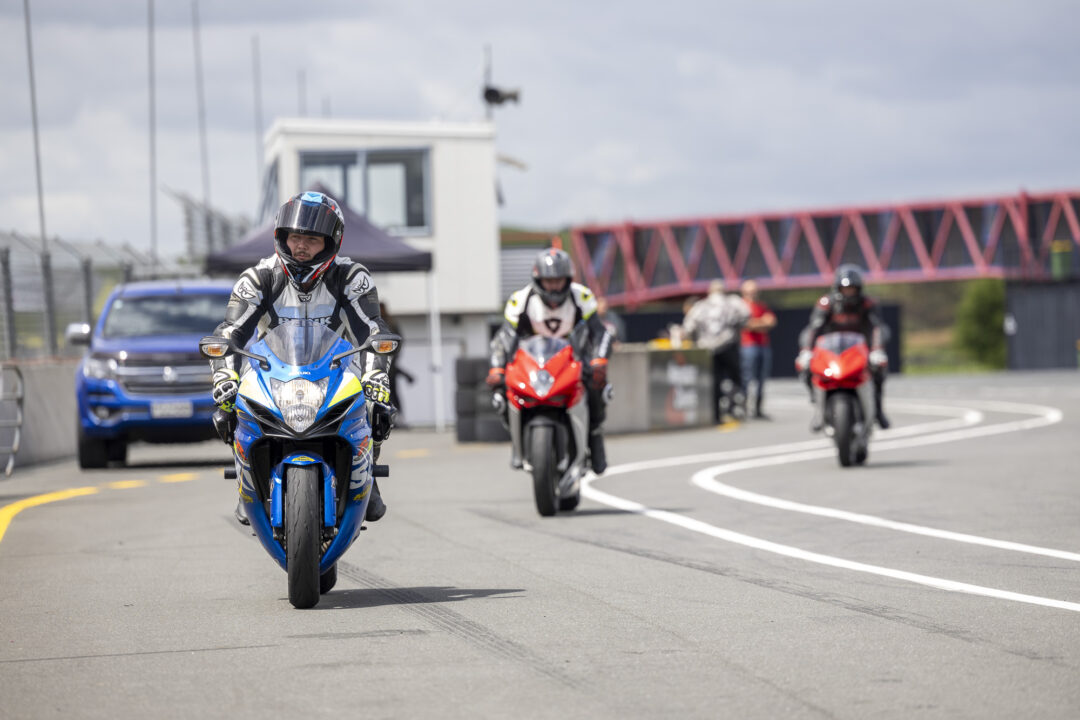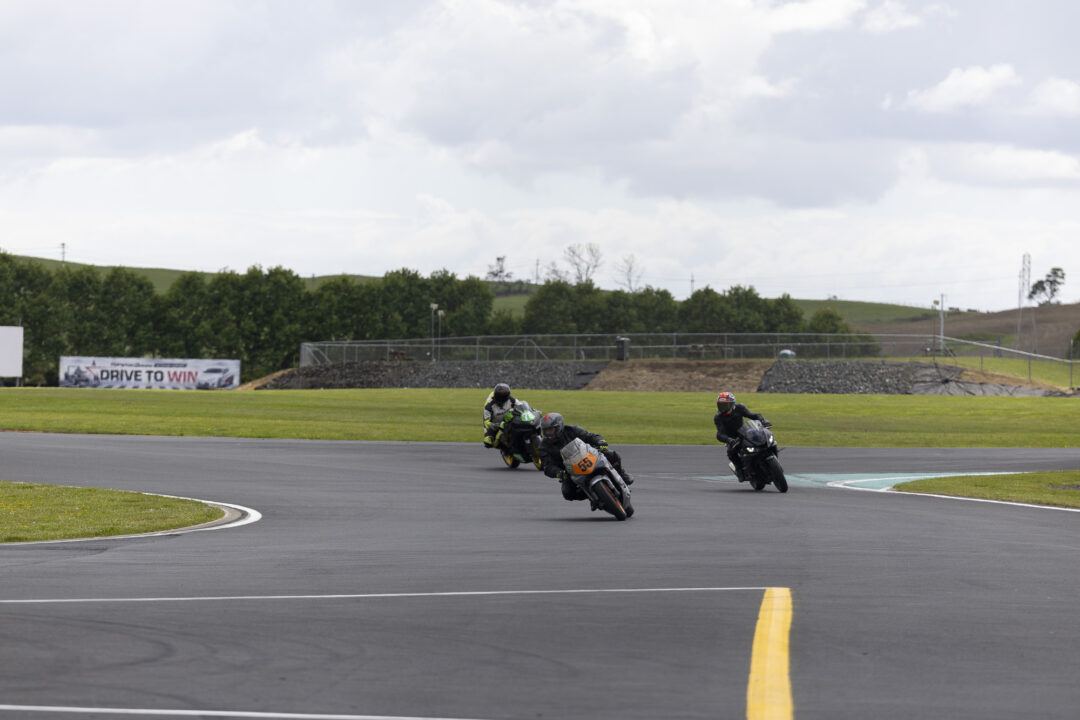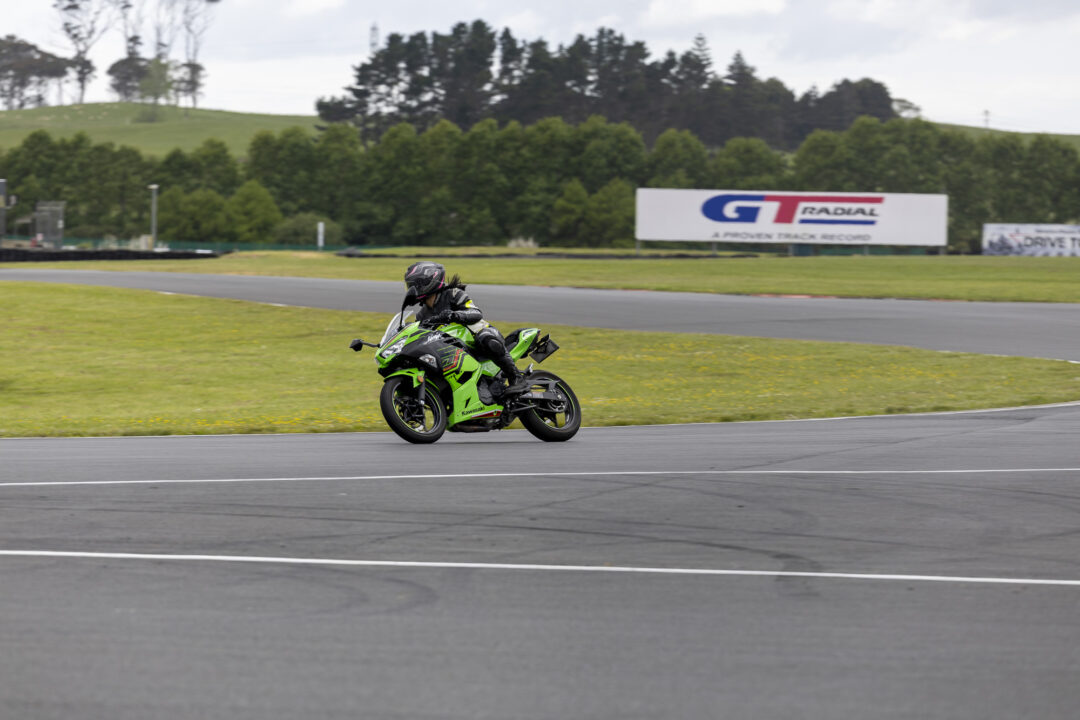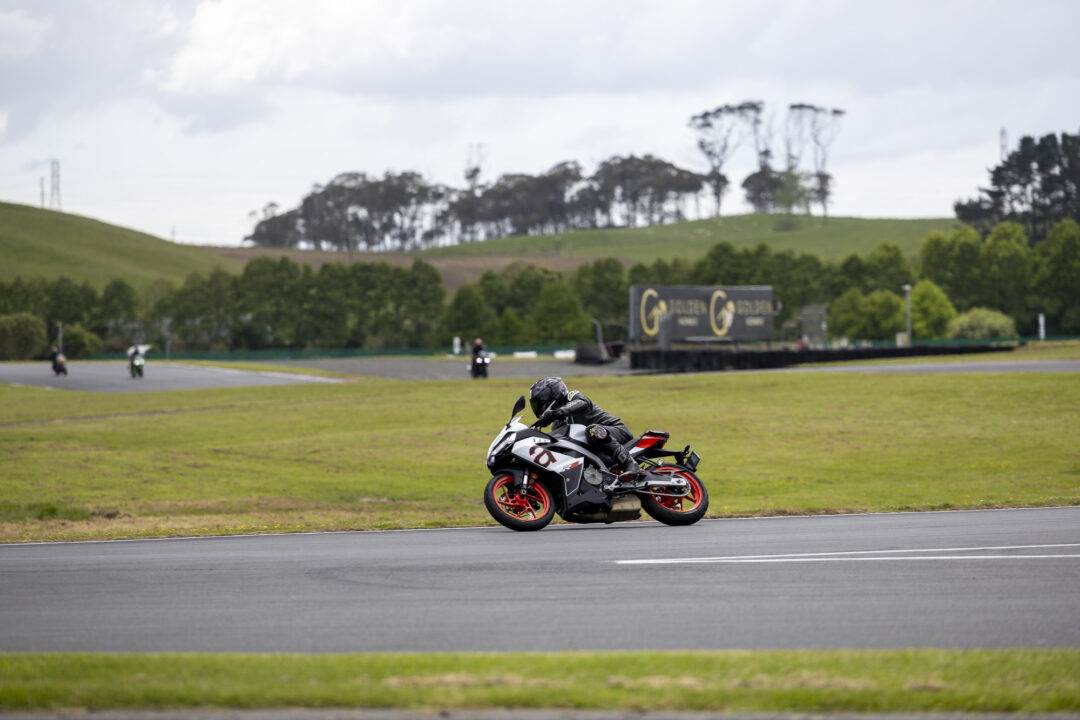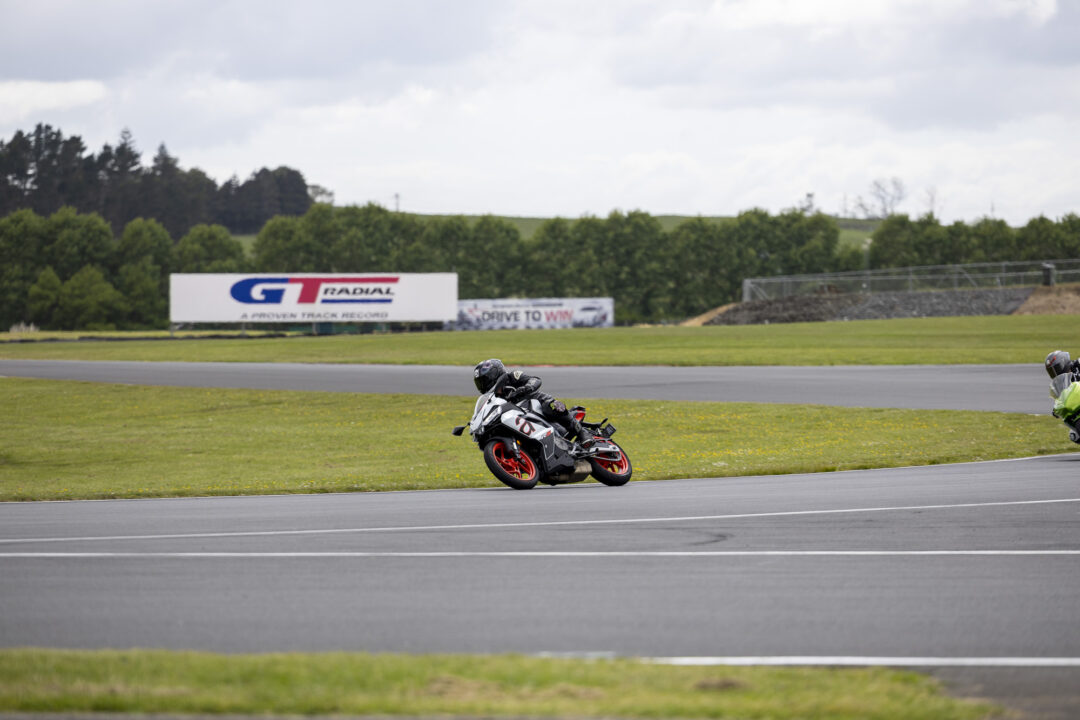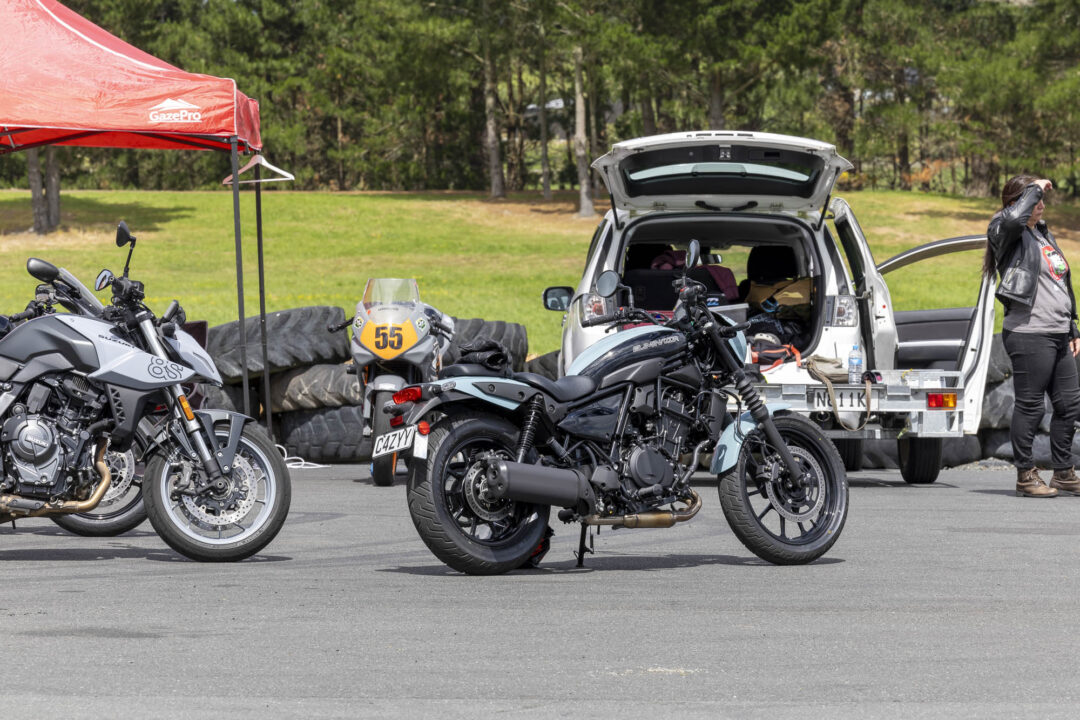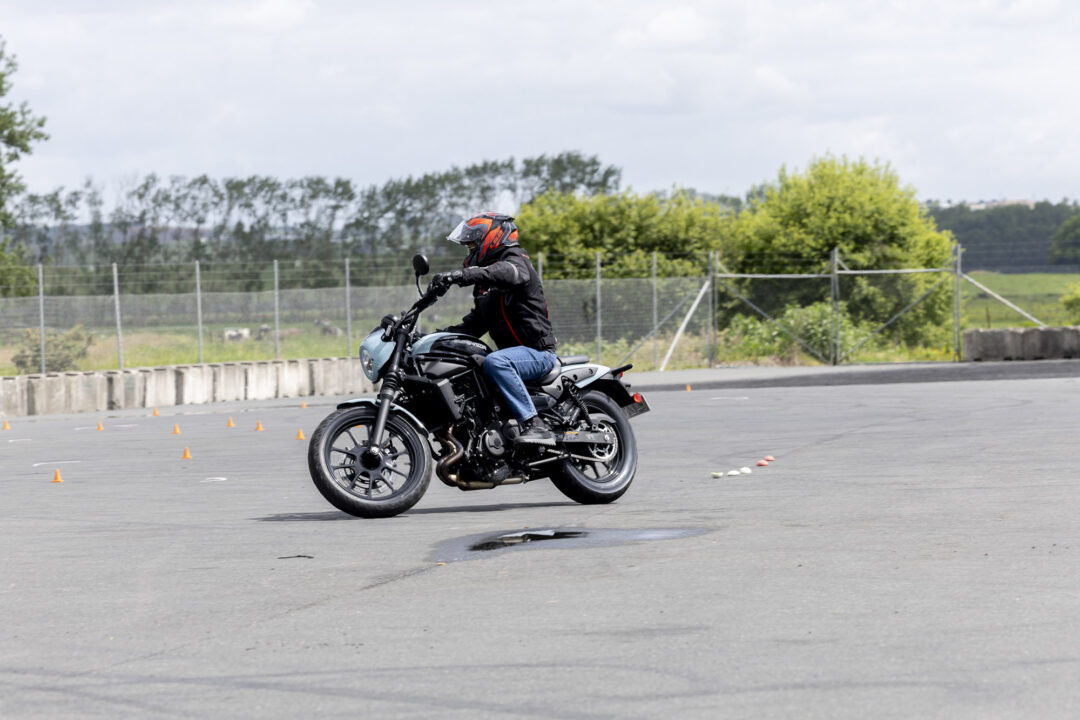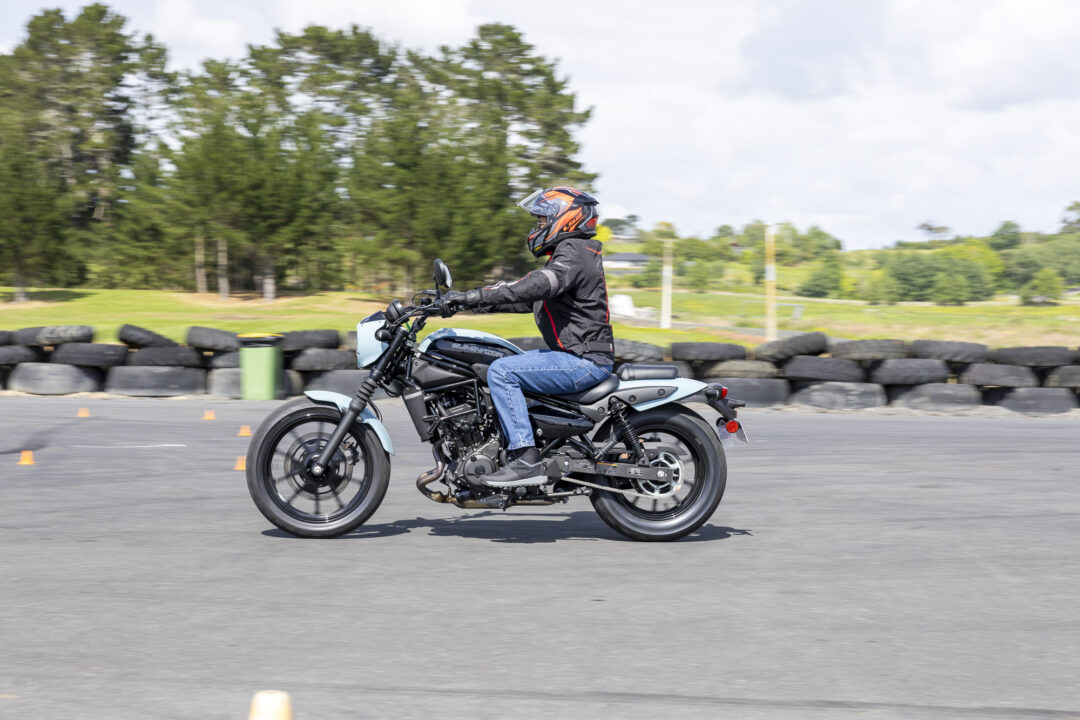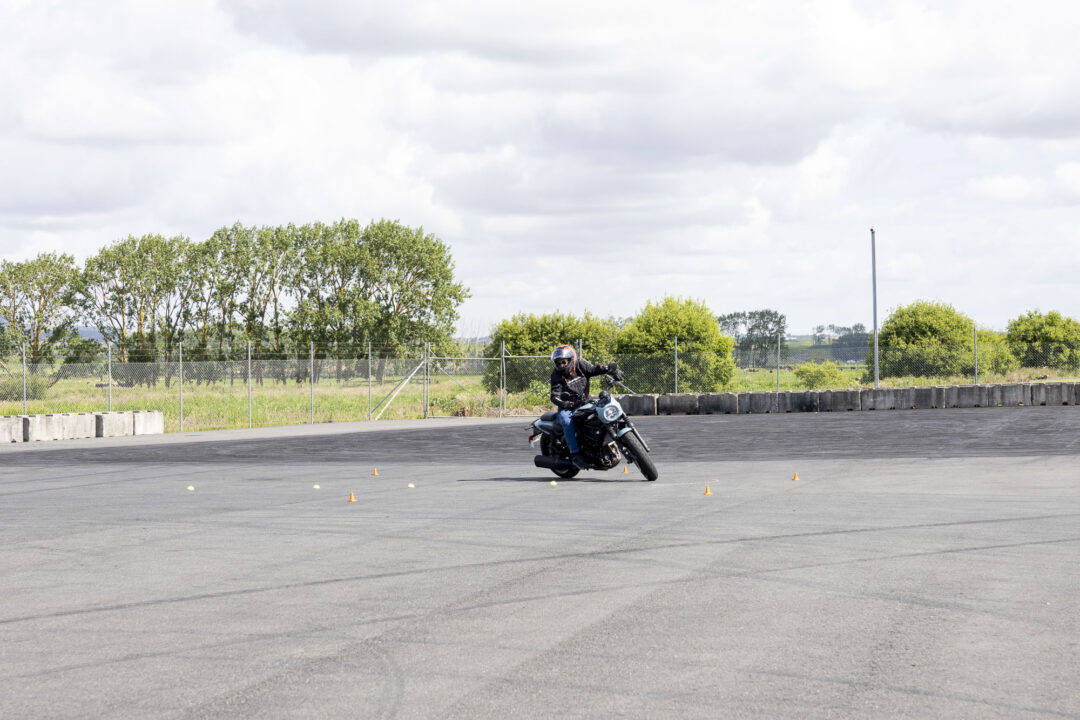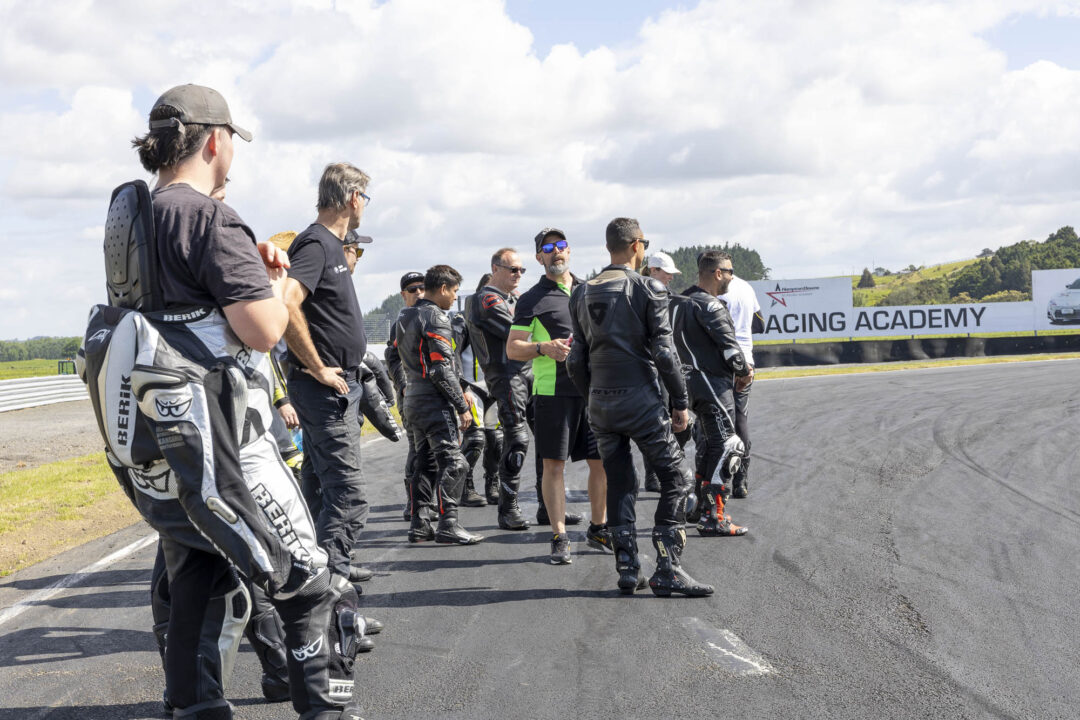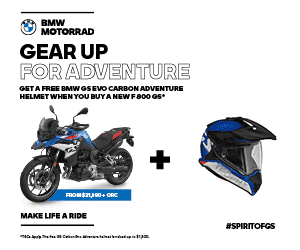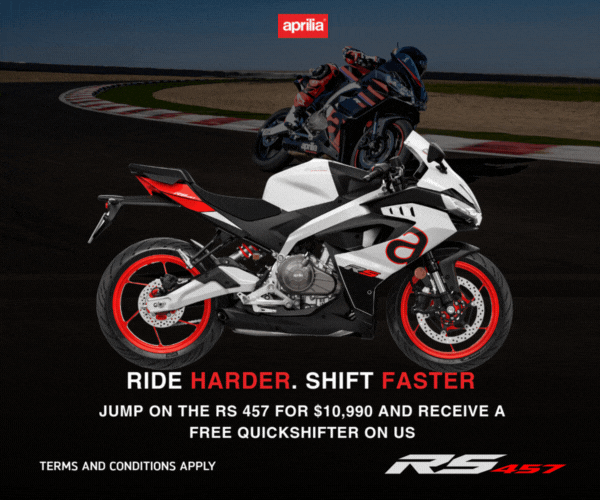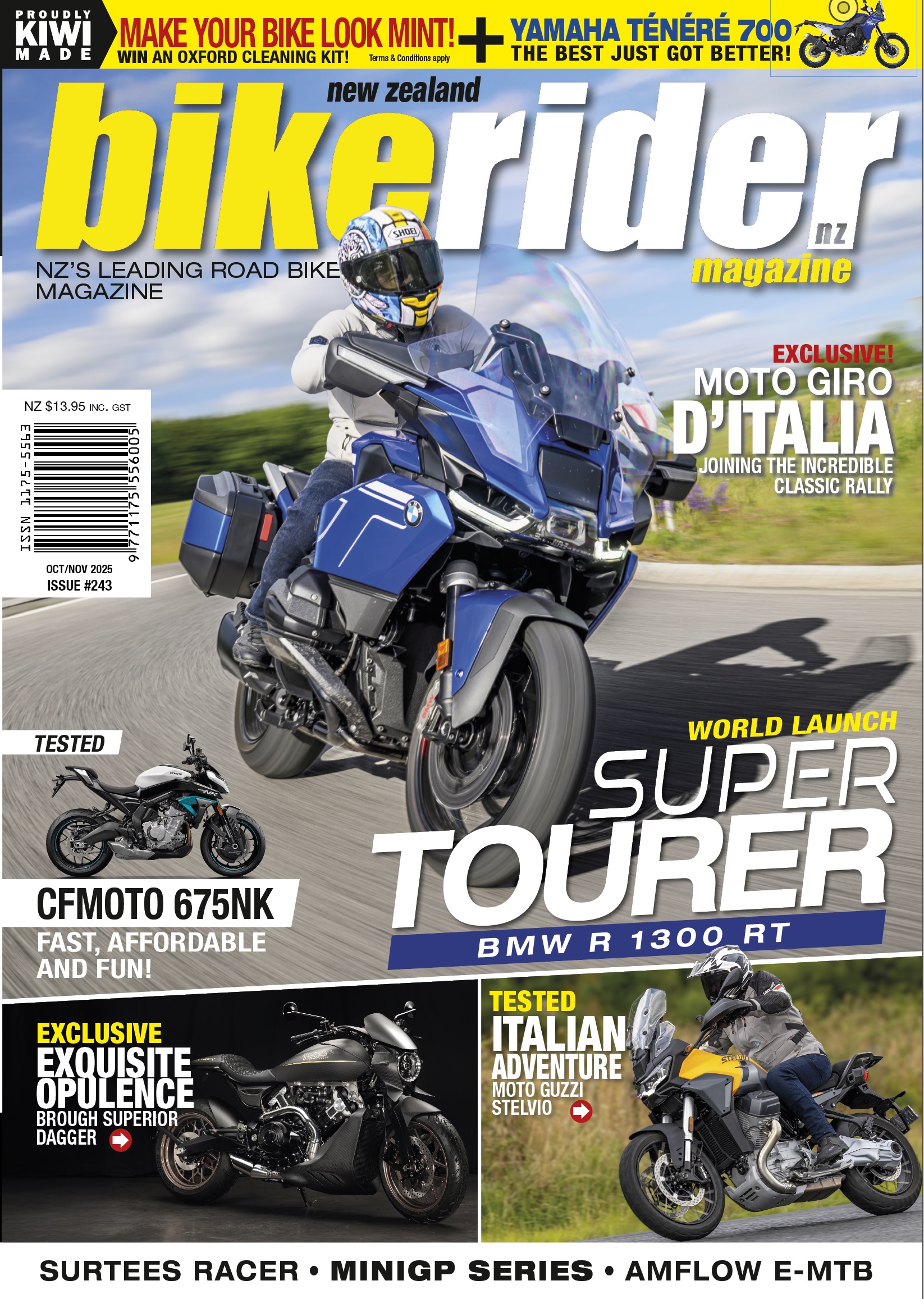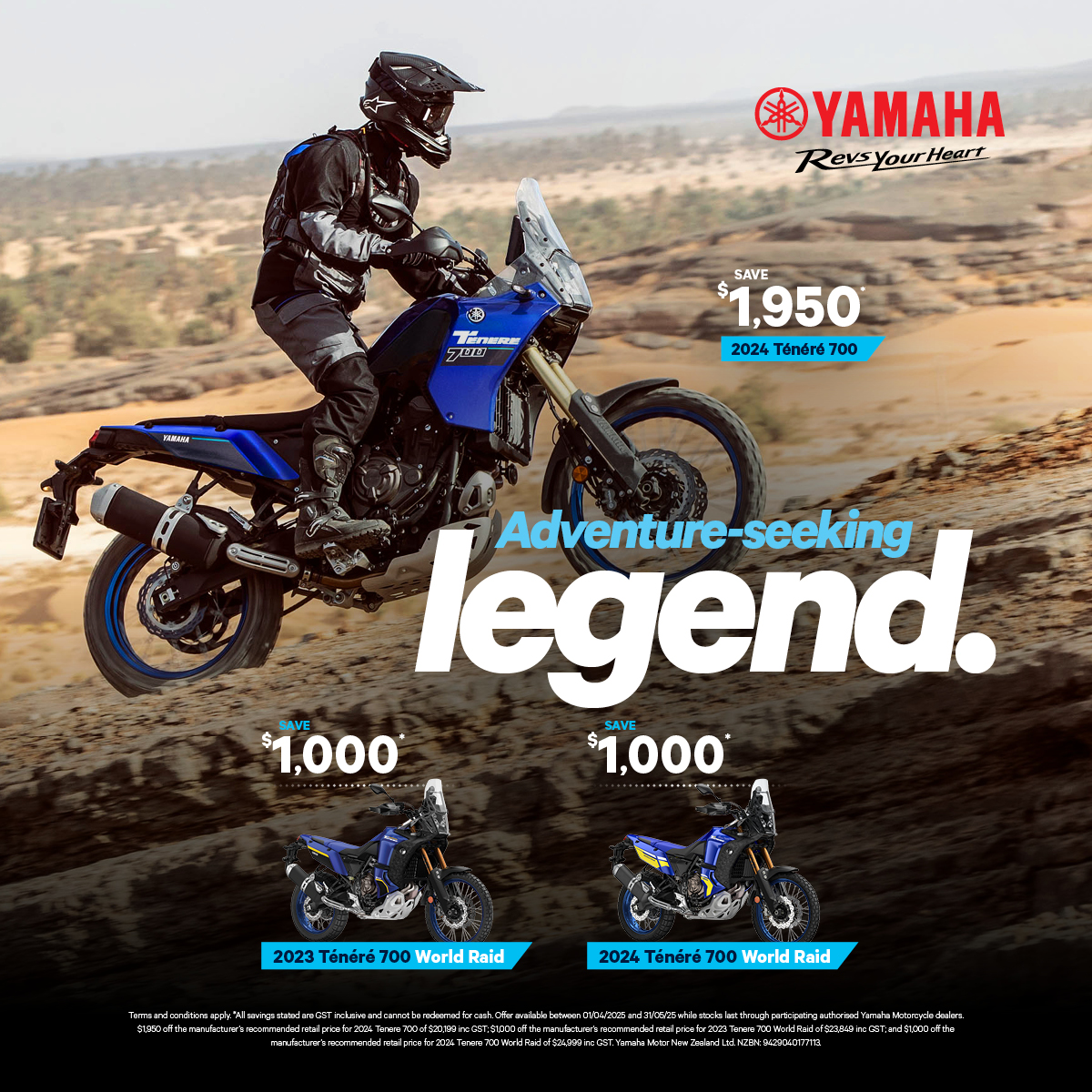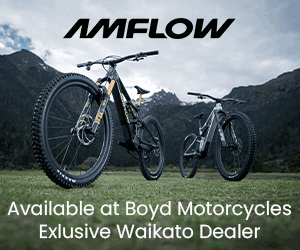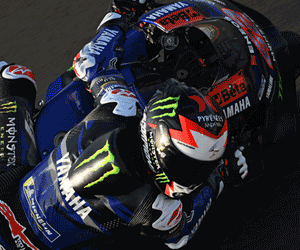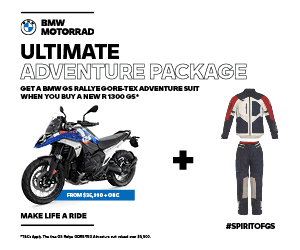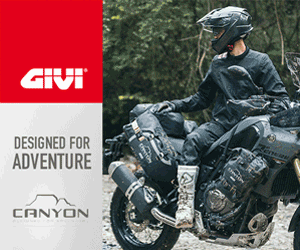- Pass Masters are an Auckland-based motorcycle training company, offering Ride Forever courses and motorcycle licence tuition.
- Owners, Chris Smith, is a racer, ex-motorcycle stuntman and all-round good guy.
- They run multiple track training session a year plus adventure training and other options.
A chance to spin some more laps on the awesome Aprilia RS 457 while dusting the BRM GSX-R600 off made for a fun day with the Passmasters team.
Words: Paul Pics: Two Creative Photography
Hampton Downs’ small club circuit is the perfect choice for an intimate training session, and I’m not talking about getting touchy-feely. The flat layout makes it easy to see an entire lap from the pits, while the pit area, which is tucked well away from the main pits, allows for loads of room. It’s a neat spot and where Passmasters do all their track training days.
Chris, the head honcho of Pass Masters, is not only an expert motorcycle trainer, he’s also pretty handy on a race bike, making him the ideal choice to give the small group of attendees some tips on riding. And it’s not just about how to ride fast around a racetrack. No, it’s a day where riders have a safe area with plenty of run-off and nothing approaching in the opposite direction where they can gain some new skills that will hopefully see them become better and safer riders on the road.
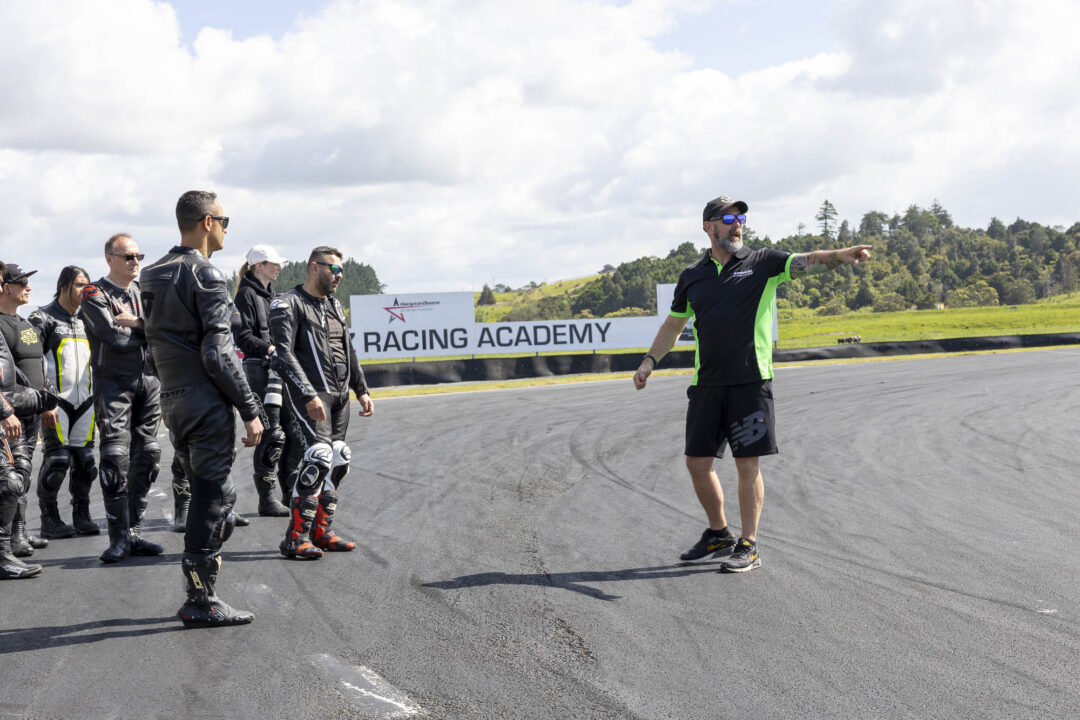
Two In One
While there were 12 or so riders who had come along to ride on the track – some popping their track cherry in the process – there was another group who’d come along to learn how to ride slowly. Now, that might sound a bit of a weird thing to do at a racetrack. Still, with only a small group of riders and loads of room in the pit area, it meant plenty of opportunity for another couple of Chris’s team to set up a series of cones and put a group of riders through a series of lessons on slow-speed control of a motorcycle. We sent BRM’s newest tester along to tackle this portion of the day, as you’ll see in the boxout.
For myself and Taine (my son, who I brought along for some upskilling), the day consisted of a lesson from Chris under an Ezy-up with a whiteboard set up for some (occasionally dodgy…) diagrams before heading out onto the track to give the skill a go. With riders split into two groups, there was plenty of room on the track’s 1.2km of twists and turns so it never felt busy. And with the large width of the racetrack – which is one of Chris’s lessons to widen your vision and realise how much road you have to play with – it was easy to overtake a slower rider without feeling like you needed to rush.
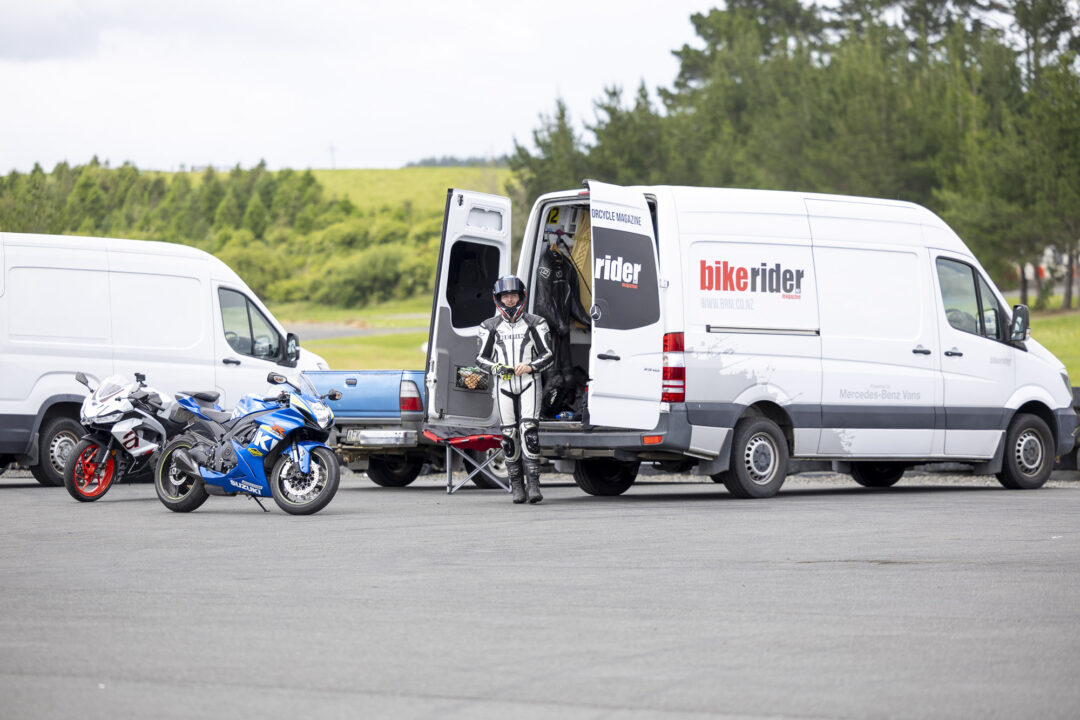
Structured Day
The day on track began with an exercise to get us to appreciate our speed, with a session of circulating without using our brakes and limited to 3rd and 4th gears. The idea is to give you an appreciation of the speed at which you can go around a corner happily without grabbing the brakes while also using the throttle on the corner exit to balance the bike. Motorcycles are much more stable when they’re under power.
Next, we had a walk around the track and studied the shape of the corners and discussed the different lines you could use to get around each one. Again, this translates to the road as it shows that apexing too early can lead to you running wide on the way out. Conversely, going in deep and apexing late enables you to get the bike back up on the fatter part of the tyres sooner and lets you dial in the throttle harder and earlier.
An interesting exercise was about the rider’s body position and how it affects steering. If a rider of a sportsbike is sitting up straight with all their weight on the handlebars, it can make it harder to turn. While crouching down with your elbows bent makes for much less pressure required through the handlebars to get the bike to turn. This then led to some riding position demonstrations on a static bike to show riders how to position their body, including sliding their butt over slightly, although the technique nowadays is much more about getting your head and body over and into the direction you’re going rather than hanging off.
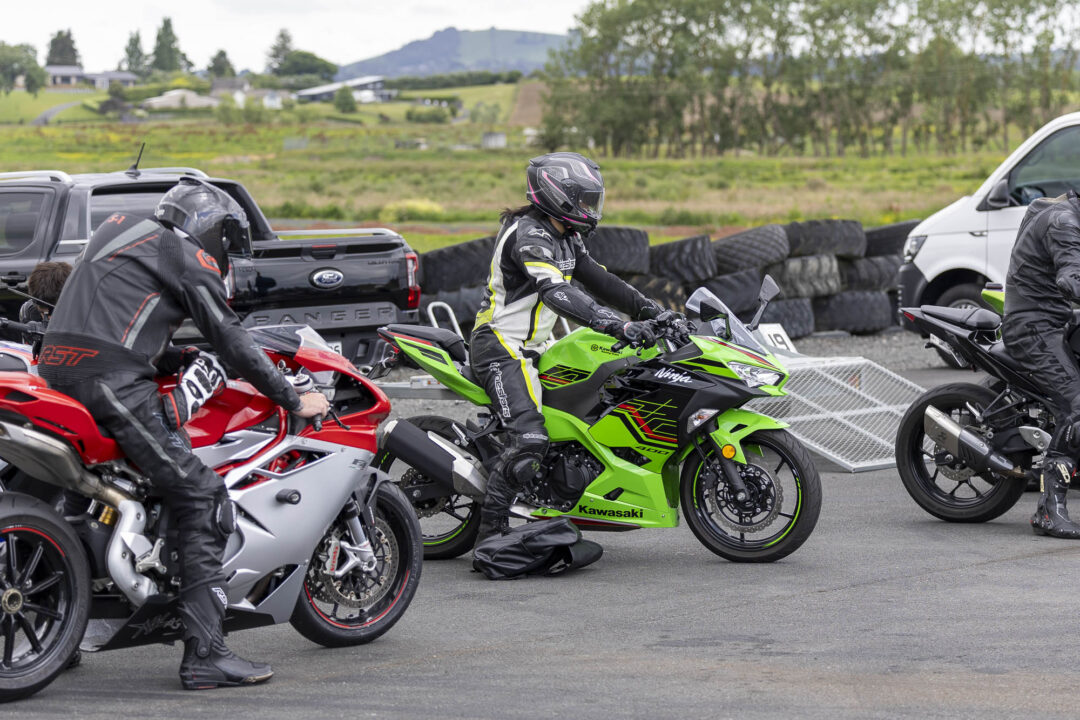
Proper braking is something that every rider needs to learn, and if this is the only thing you pick up from doing some track training, then it’s still a massively gain. Many riders are unaware of how hard they can brake on a motorcycle and also the physics involved, something that referred to as the ‘100 degrees of cornering’. The general principle is a sliding scale of braking to leaning the bike. So, if you’re upright, you can use the most of the brake’s power, but the more you lean, therefore increasing the angle, the less % of brake power you can use. With many riders attempting trail braking using this principle for the first time, it’s another reason doing this sort of training on a racetrack makes perfect sense to improve a rider on the road.
Finally, it was time to get the riders to concentrate on what they’re looking at, with a couple of coloured stickers enlisted to help demonstrate the principle. As our speeds increase or we start getting worried, our brain tends to transfix on the things it thinks might hurt us, essentially causing us to tunnel vision or target fixate. And we all know that ends badly.
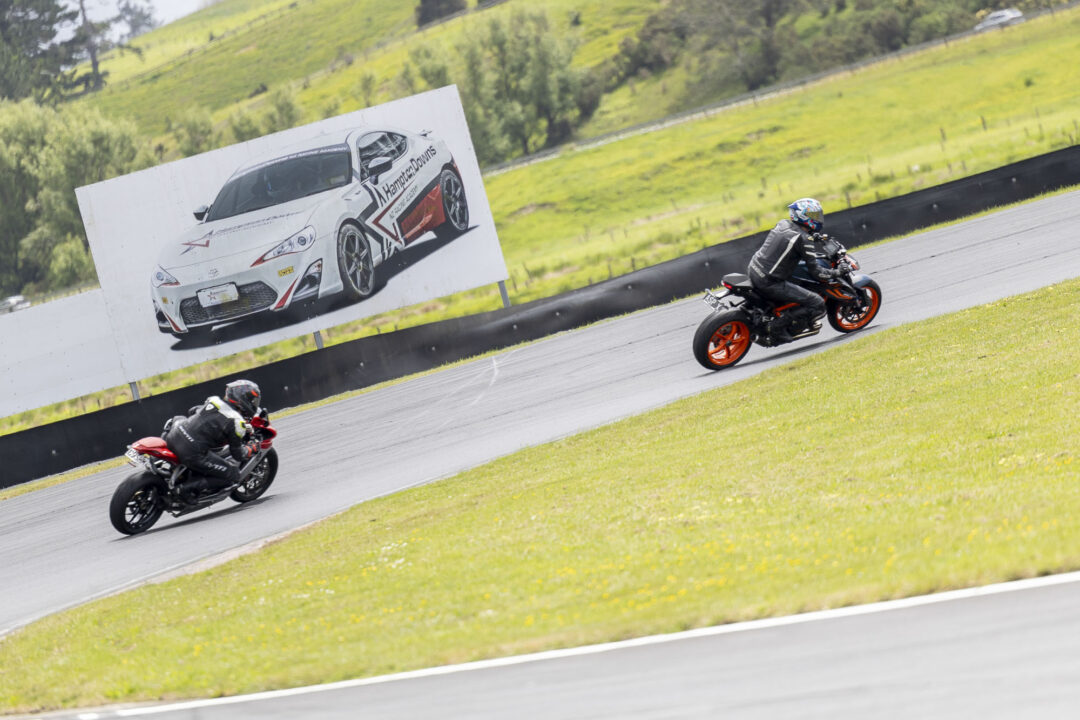
Chris got each rider to put their helmets on and then tell him the widest they could see on their visor while looking straight ahead, then marking the limits of their peripheral vision with a sticker. He then sent everyone out and told them to keep trying to see the stickers while riding around the track, with the idea being that keeping your vision wide and looking ahead actually slows everything down and makes you more aware. When you panic and start looking, say, close to the front of the bike, suddenly everything seems a whole lot faster, and your brain then goes into panic mode. That’s when you tense up, start making jerky movements and essentially begin to get it all wrong. Looking where you want to go, looking far ahead, and remembering not to target fixate makes riding much smoother and more controlled, while also enabling you to ride faster and safer.
With the afternoon providing riders with the opportunity to circulate freely and practice the tips they’d learnt in the sessions, the difference in the riders’ ability and smoothness was incredible to see. If you haven’t tried it, we seriously recommend giving it a go, as it’s not just about riding on the track.

Slow Training: Neil’s Day Learning To Go Slow
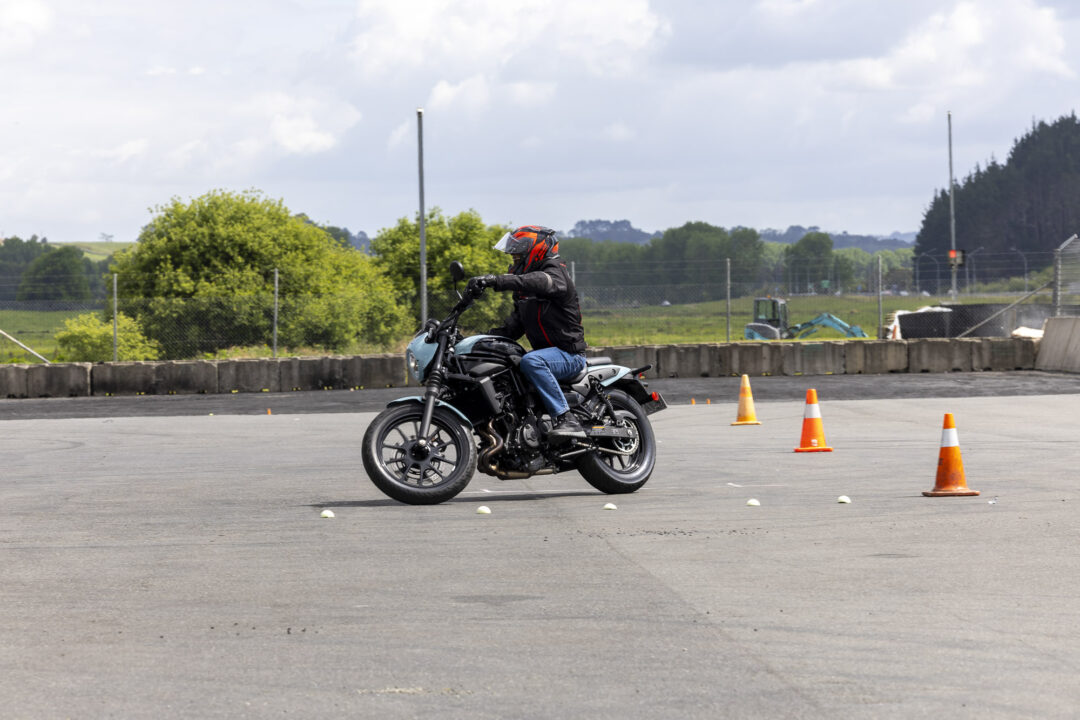
“Learning to ride slow is the first step to riding fast”, said someone who’s extremely quick around a racetrack, I’m sure. Well, with that idea in mind and with the background of Hampton Downs Racetrack behind us, we began the slow training course by Passmasters. And I chose the Kawasaki Eliminator as my weapon, for good reason. It has a relaxed riding posture, so I can concentrate on learning, and a tractable engine that would only require me to feather the clutch at slow speeds.
We began with a slalom course that was to be completed by slipping the clutch and without using the front brake. With an emphasis on controlling the bike with the rear brake and through throttle control, the point was to understand the weight of the motorcycle. After a bit of practice and tipping of a cone or two, I got a hang of the drill.
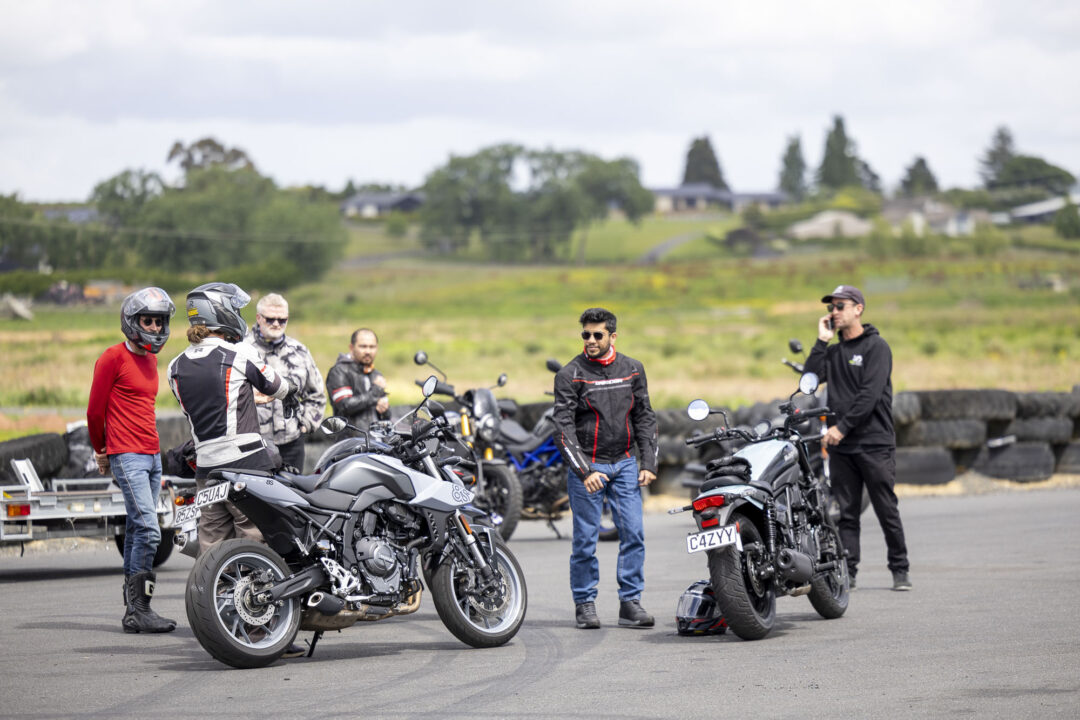
Soon, we were on to the next one – riding in a figure of eight. Here, the lesson was to train your vision and look where you want to go rather than fixate on the ground. After going around in circles for a while, the course moved to a three-sided box setup. For this bit, one needs to make a U-turn from a standstill to get out of the box. Although challenging, this part of the training was my favourite. The Kawasaki Eliminator showcased its agility, much to the amazement of the trainers. Well, maybe some credit to my skills, too. Body position and tipping the bike in while trusting the tyres was key to successfully completing the course.
The last part was the brake training. This, in my opinion, is the most important of all courses. If you can’t slow the bike down, you’ll never be fast enough. So, with cones placed as a marker, we were expected to jam on the brakes at around 50km/h and come to a stop. Mind you, there is a technique. The trainers called it ABC – roll off the accelerator, apply the brakes with an emphasis on the front, and finally pull in the clutch. As I found out, it took a while to unlearn some things.
Nonetheless, the slow training course from Passmasters was a fun and extremely educative course. The lessons learnt are useful for riding every day, understanding the bike better and becoming a better rider overall. And by the end of it, I just came to like the Eliminator even more!

